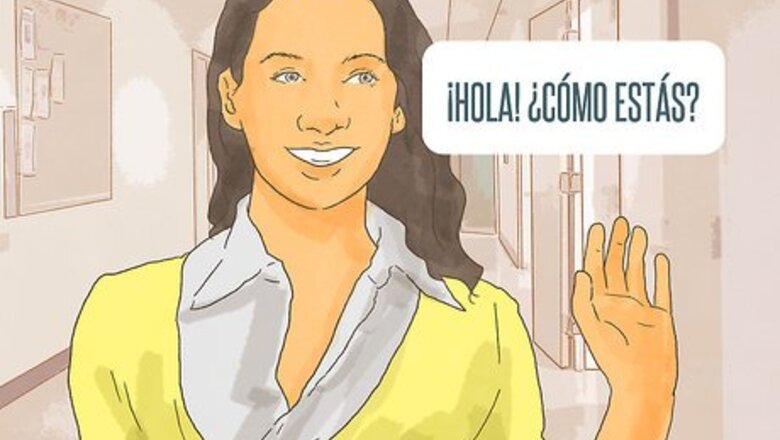
views
X
Research source
Learning through Immersion
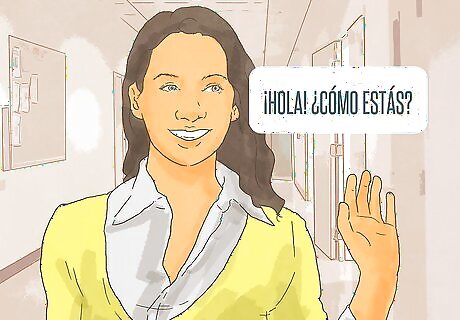
Learn a few basic Spanish phrases. If you know how to say hello and goodbye, as well as ask some basic questions, you'll be able to have a brief conversation with anyone in Spanish. For example, start by learning "¡Hola! ¿Cómo estás?" (OH-lah COH-moh ess-TAHS), which means "Hi! How are you?" Practice your pronunciation and use Spanish greetings instead of English when you greet friends and neighbors. If you have any friends or acquaintances who speak Spanish, ask them to only speak to you in Spanish. Try to respond to them in Spanish as well, and get their help with appropriate responses.

Listen to music in Spanish. Listening to music with Spanish lyrics is a good way to get used to the way Spanish sounds, and the repetitive nature of songs will help you learn words more quickly. Choose slower music so you can more easily understand the words. Don't worry if you don't know all the words in the lyrics right away – just listen and immerse yourself in the sounds of the Spanish language. As you expand your vocabulary, you'll understand more and more.

Watch Spanish movies and television. Spanish television and movies can be a good way to learn the language relatively quickly. You can find Spanish programs online for free, as well as on cable or movie providers such as Netflix. Look for shows from places where spoken Spanish tends to be slower, such as Colombia. While watching, turn on subtitles in Spanish, not English. You don't want to learn how to translate Spanish into English, you want to learn how to communicate in Spanish. Spanish subtitles on Spanish programs will help you associate the written word with the sound.
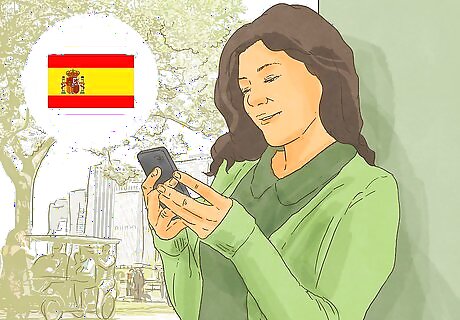
Change your applications and devices to Spanish-language settings. To learn Spanish fast, you need to make it as much a part of your life as possible. Switching the language on your devices will help the language become more natural for you. Changing your device settings won't necessarily expose you to a significant number of new words and phrases, but it will help you start thinking more in Spanish instead of in English. You can expand this basic principle to other areas of your life as well. For example, if you go to yoga class every week, you could switch to a class that's taught in Spanish rather than in English.
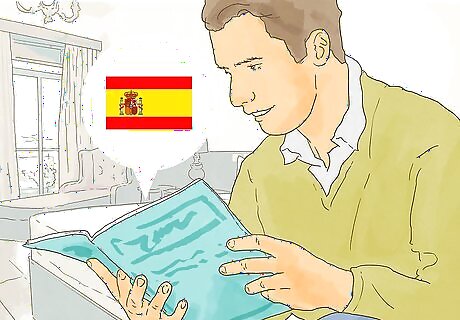
Read Spanish books. Start with children's books, which are written using simpler language and are designed to help children learn the language. If you read books you already know pretty well, it will help you get used to the language faster. Most classics and bestsellers have been translated into Spanish. Many of these books are available for free online in eBook format. You also may be able to find cheap copies at your local used bookstore. Try reading out loud rather than silently. It will help you develop an ear for the language, and you'll associate the written words with the sound of the words. You also might try audiobooks in Spanish. With digital recordings, you can slow down the speed so that you can understand the speaker better.
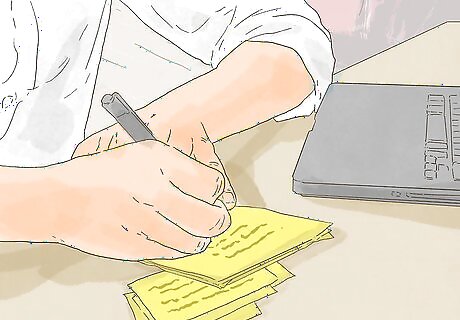
Make your own signs and flashcards. Especially if you're a visual learner, flashcards and signs can help you start to associate things around you with Spanish words. Going through flashcards every day can help reinforce vocabulary words and concepts you've already learned. Through an online search, you may be able to find free flashcard templates that you can download and print. Label objects in your home with the Spanish word for that object. Every time you look at the object, you'll be reinforcing your Spanish-language skills. Over time, you'll come to associate the object with the Spanish word rather than the English word.

Travel to a Spanish-speaking country. If you have the means to do so, traveling to a Spanish-speaking country can be the ultimate immersive experience. When everyone around you is speaking Spanish, you find it easier to start thinking in Spanish instead of in English. If you're a student, visit your school's study abroad office to find out about opportunities to spend a semester in a Spanish-speaking country. Not only will you get course credit, but you'll also have opportunities to learn the Spanish language and culture. While in the country, try to speak only in Spanish. You'll learn more quickly when you force yourself to speak the language.
Using Computer or Mobile Apps
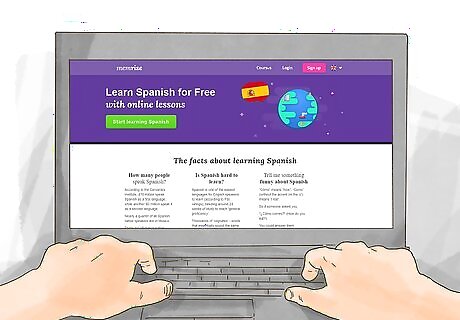
Search for online courses. There are a number of online courses available that can help you learn Spanish as well as other languages. Many of them are free, while others charge a small monthly subscription fee. Many websites, such as Memrise and Duolingo, have mobile apps that allow you to take your learning with you wherever you go. This can make it easier to get in some practice with Spanish every day. Software programs, such as Rosetta Stone, can teach you Spanish relatively quickly. Rosetta Stone has been used by the U.S. State Department to enable new diplomats to learn a language quickly.
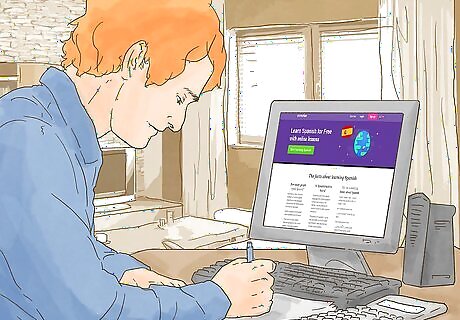
Sign up with free programs to learn vocabulary. If you want to learn Spanish fast, vocabulary words can help you get there faster than trying to memorize abstract grammar rules or spending time conjugating verbs. For example, Memrise has a specific course called "First 5,000 words in Spanish." Taking this course can greatly expand your vocabulary and give you more words to use if you practice diligently. These programs are only as good as the effort you put into them. While you can learn a lot of words using online programs or mobile apps, you still need to supplement them with conversation and other immersion techniques. Otherwise, you just know a bunch of Spanish words but don't have the ability to put them together.

Do a Spanish lesson every day. If you're trying to learn a new language through self-study, you must be diligent. Practicing every day will keep the Spanish words and phrases you learn fresh in your mind. All you need is a few minutes a day. Typically you'll learn fastest if you have 20 or 30 minutes each day that you can dedicate to language learning. Spend half your time reviewing and reinforcing what you've already learned, and then try to pick up something new.

Contribute to Spanish blogs and forums. If the website you use has forums for members, these can be a good way to practice your Spanish as well as ask questions and get tips from other users who are also trying to learn Spanish.
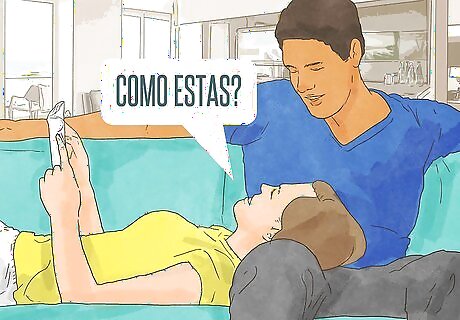
Practice speaking. Some online programs and mobile apps have ways to connect you with other users so you can practice your conversation skills. Otherwise, talk to friends and neighbors to find someone willing to help you practice. Some apps may have voice recognition software that enables you to get some practice speaking, but it's still no match for actual conversation. If you don't know anybody you can talk to in Spanish, talk to yourself, or sing in the shower. These will help you get better with pronunciation and word recall.
Getting Help from Others

Search for local classes. If you learn best through interaction, a class may be your best option to learn Spanish as quickly as possible. Classes can be an expensive way to learn a language, so evaluate your budget carefully. Community colleges often have relatively inexpensive language classes that are open to the public. In addition to taking group classes, you also have the option of hiring a private tutor. However, private tutors can be expensive.
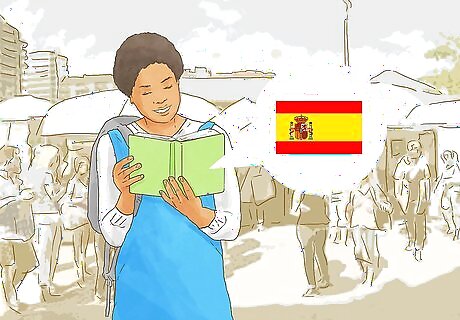
Buy a Spanish language dictionary and phrasebook. A basic dictionary will likely be required if you're taking a local class. While this book can help you quickly find the word or phrase you need for a particular situation, try not to become to dependent on it if you want to become conversational in Spanish. If you're taking a local class, there also typically will be a textbook you'll be expected to buy. You can find these textbooks at used bookstores and buy them even if you're not enrolled in a class. An elementary textbook can help you learn the basic grammar rules you'll need to know when you're just starting out. But if you want to learn Spanish fast, you need to focus more on speaking the language. Don't get bogged down in memorizing grammar rules and doing written exercises.

Join a local Spanish conversation group. Most cities and towns have a number of Spanish-language groups and societies that meet on a regular basis. Joining one of these groups gives you the opportunity to practice your language skills and get live feedback. Try to find a group that has a mix of native speakers and people like you who are trying to learn. If the group is made up entirely of learners, you may accidentally pick up some bad habits.
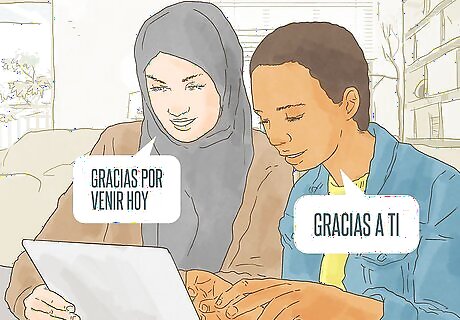
Find a language partner. Use social media or a personal ad to find a Spanish speaker who lives near you who would like to work on their English. You can trade lessons so they help you with Spanish while you help them with English. If you can't afford formal classes, this can be a more accessible way to learn Spanish. However, just because someone knows how to speak Spanish doesn't necessarily mean they'll be the best teacher. If you can't find someone near you, search online to find a language partner who is willing to communicate with you using a video chat service.




















Comments
0 comment